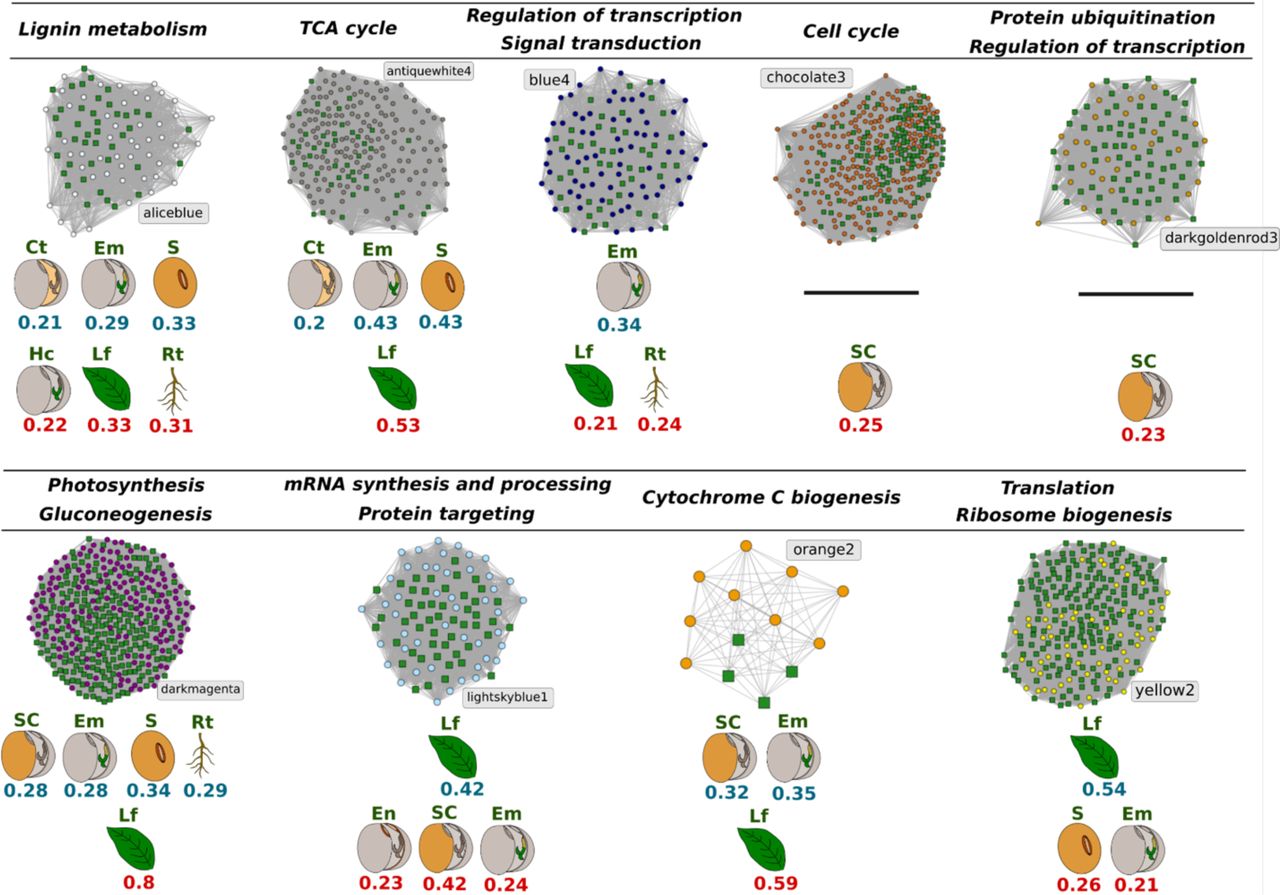We report a soybean gene co-expression network built with data from 1284 RNA-Seq experiments, which was used to identify important regulators, modules and to elucidate the fates of gene duplicates. Soybean (Glycine max [L.] Merr.) is one of the most important crops worldwide, constituting a major source of protein and edible oil. Gene co-expression networks (GCN) have been extensively used to study transcriptional regulation and evolution of genes and genomes. Here, we report a soybean GCN using 1284 publicly available RNA-Seq samples from 15 distinct tissues. We found modules that are differentially regulated in specific tissues, comprising processes such as photosynthesis, gluconeogenesis, lignin metabolism, and response to biotic stress. We identified transcription factors among intramodular hubs, which probably integrate different pathways and shape the transcriptional landscape in different conditions. The top hubs for each module tend to encode proteins with critical roles, such as succinate dehydrogenase and RNA polymerase subunits. Importantly, gene essentiality was strongly correlated with degree centrality and essential hubs were enriched in genes involved in nucleic acids metabolism and regulation of cell replication. Using a guilt-by-association approach, we predicted functions for 93 of 106 hubs without functional description in soybean. Most of the duplicated genes had different transcriptional profiles, supporting their functional divergence, although paralogs originating from whole-genome duplications (WGD) are more often preserved in the same module than those from other mechanisms. Together, our results highlight the importance of GCN analysis in unraveling key functional aspects of the soybean genome, in particular those associated with hub genes and WGD events.
Link of publication HERE

Publications 15
Research 2
 Posted on 08 Dec 2021
Posted on 08 Dec 2021
 Posted on 03 Nov 2021
Posted on 03 Nov 2021

New paper published! - Phylogenetic analysis and population structure of Pseudomonas alloputida
Posted on 03 Nov 2021 Posted on 03 Nov 2021
Posted on 03 Nov 2021